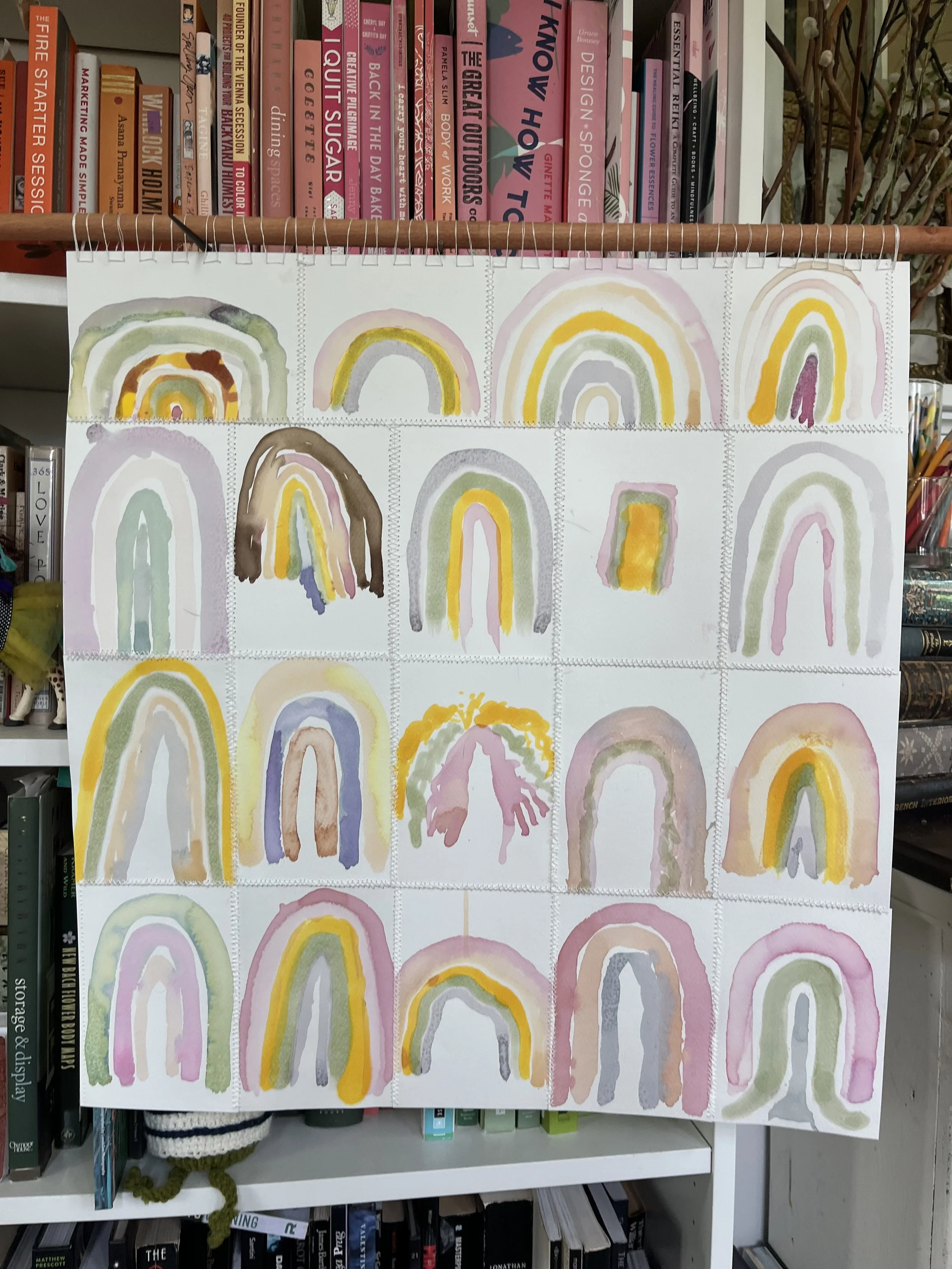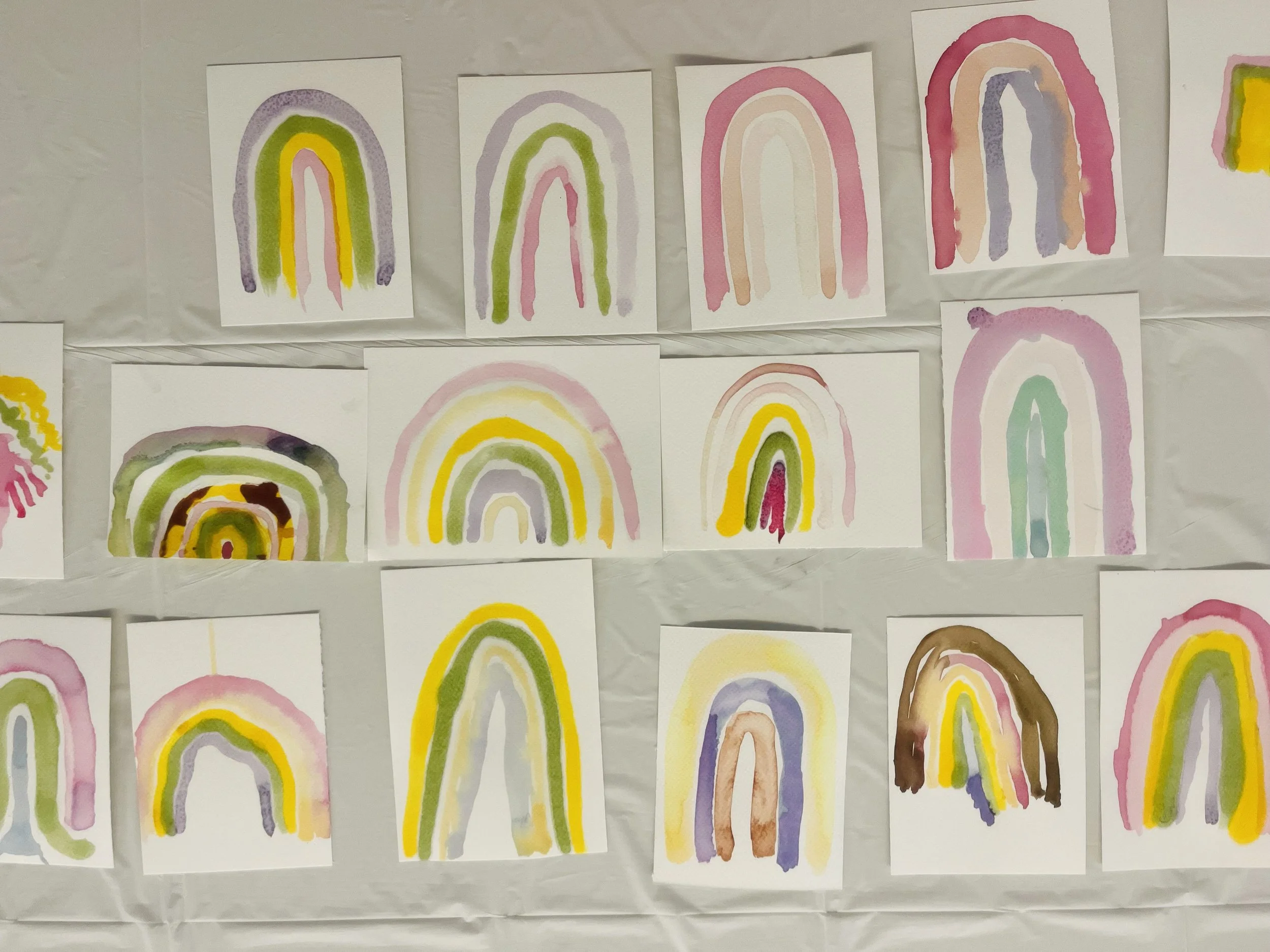“A Beautiful Cycle”
A community art installation
Statement on the "A Beautiful Cycle" by Lara Cornell
This art installation by Lara Cornell stands as a testament to the power of community, sustainability, and creative ingenuity. With paintings crafted by members of the community, the installation embodies a unified vision, brought to life through materials that honor the earth. Each artwork was created using liquid watercolors, inks and stain made by Lara herself, using food waste sourced from Chowgirls, a local sustainable catering company, and the Queermunity Cafe.
Unlike traditional art materials often derived from petroleum, contributing to microplastic pollution and synthetic waste, these inks and watercolors are free from synthetic colors, and petroleum-derived materials, and compostable. Lara refers to many conventional creations as "landfill art"—art that eventually contributes to the overwhelming burden of waste in our landfills. This installation deliberately challenges that narrative. By using exclusively compostable materials, it embraces a “soil-to-soil” process. At the end of its life, it doesn’t linger as waste but returns gracefully to the earth, nourishing the soil and leaving no trace.
More than a sustainable endeavor, this installation represents a circular system, where waste is transformed into something purposeful and beautiful, creating regenerative cycles that respect both people and the planet. The choice of food waste as the primary material not only highlights environmental stewardship but also integrates social justice, addressing the need to rethink how we design, create, and share within our communities.
Beauty is central to this work—yet it is not a static beauty, frozen in time. The pigments themselves are alive, shifting, and evolving with the seasons. These natural colors breathe and change, subtly reflecting the passages of time and the truth of living systems. In a world where the linear model of production values the unchanging, the everlasting sheen of acrylics, and the pursuit of permanence at all costs, this installation offers a gentle, radical alternative. Here, the work embraces transformation, and finds beauty in change, impermanence, and the return to the soil.
Regeneration and restoration are not just themes; they are embodied in every brushstroke and in the lifecycle of the materials. The installation advocates for cycles that restore rather than deplete, crafting a narrative that honors nature’s capacity to renew itself. Seasonality weaves through the piece, reminding us that art, like land, is alive—ever-changing, shaped by its context, and enriched by renewal.
To honor the evolving life of the installation, its transformation will be documented through photography, capturing each stage as the piece moves through time—showing not only its vibrancy and complexity, but also its gentle aging and eventual return to the earth. Rather than fading into obscurity or decline, every phase reveals a unique beauty, affirming that impermanence is not loss, but another expression of artistry. In witnessing this arc, we learn to see value in every chapter, embracing beauty as it forms, deepens, and ultimately reintegrates with the soil.
This work invites us to imagine a world where art doesn’t just inspire beauty but contributes to restoration—where creativity meets intention to leave the earth better than we found it. It is more than an exhibit; it is a vision of connectedness, a celebration of materials and place, and a call to action that reminds us of the profound potential in mindful, regenerative creation. It asks us to see art not as a product but as a process—a system designed to honor the earth, the community, and the future. This is an invitation to choose a path that reveres beauty in flux, values restoration over extraction, and builds with the long arc of seasons in mind.
Biological Food Waste Used:
Avocado (also used as a stain on the pine wood dowel)
Red Cabbage
Turmeric
Spirulina
Yellow Onion
Red Beet (1st and 2nd extractions, giving a brighter red and a soft pink)
Coffee
No chemicals/varnishes were added to preserve the paintings which could compromise it’s compostability.



